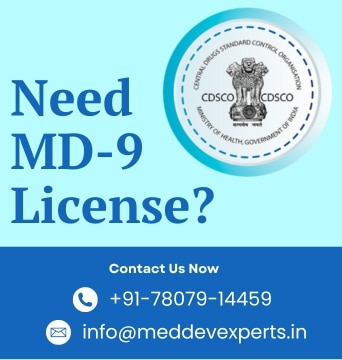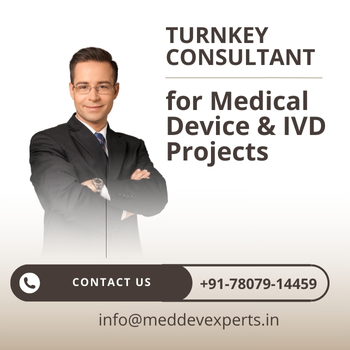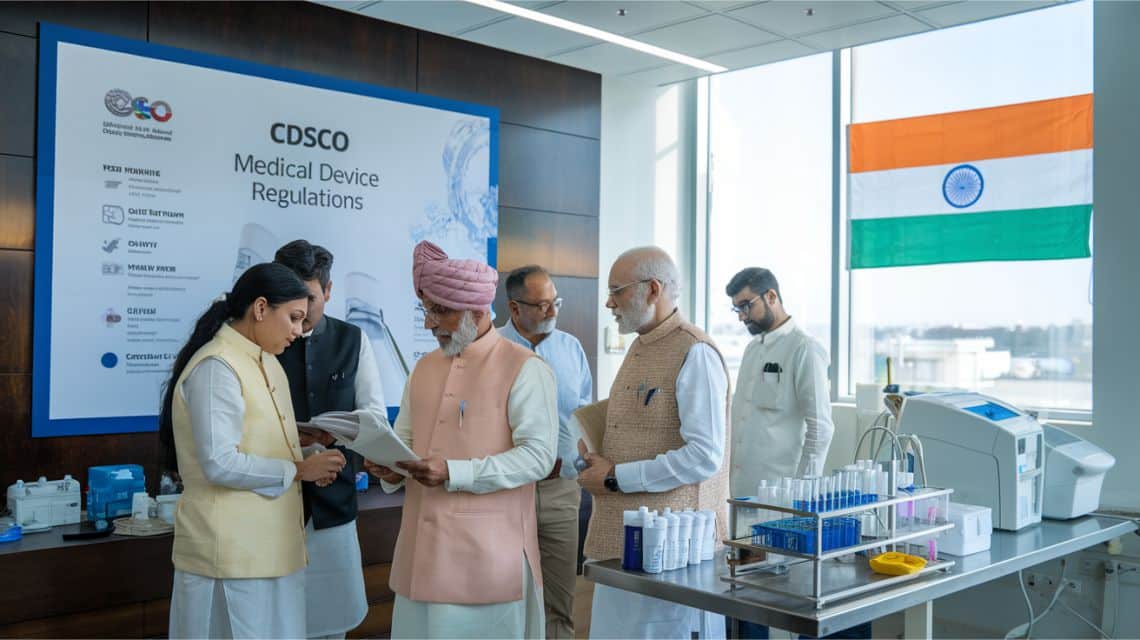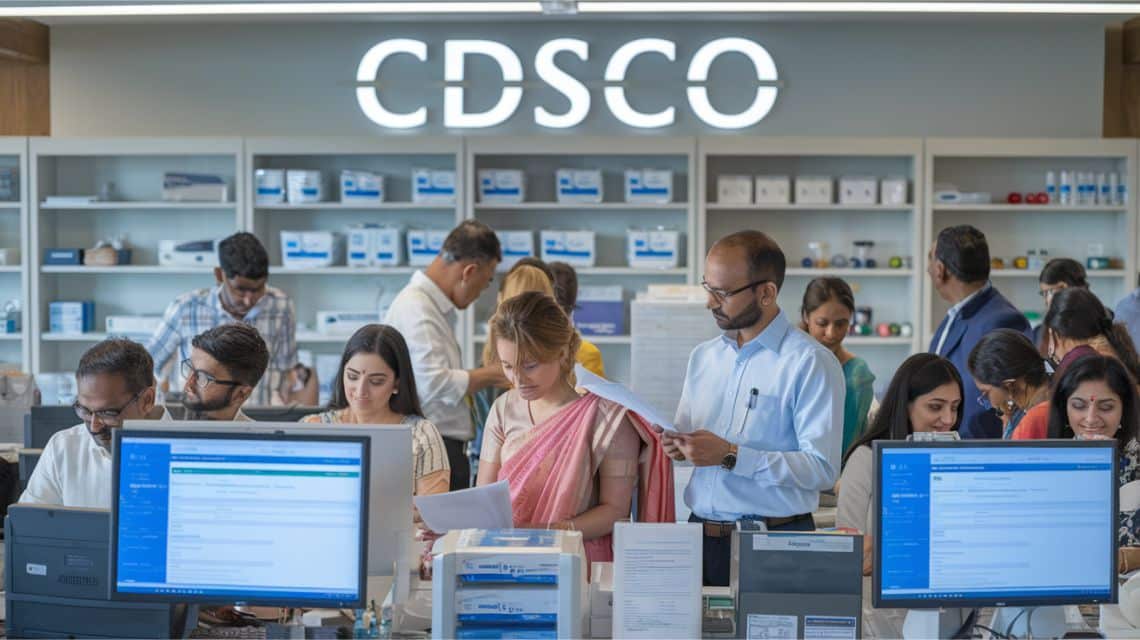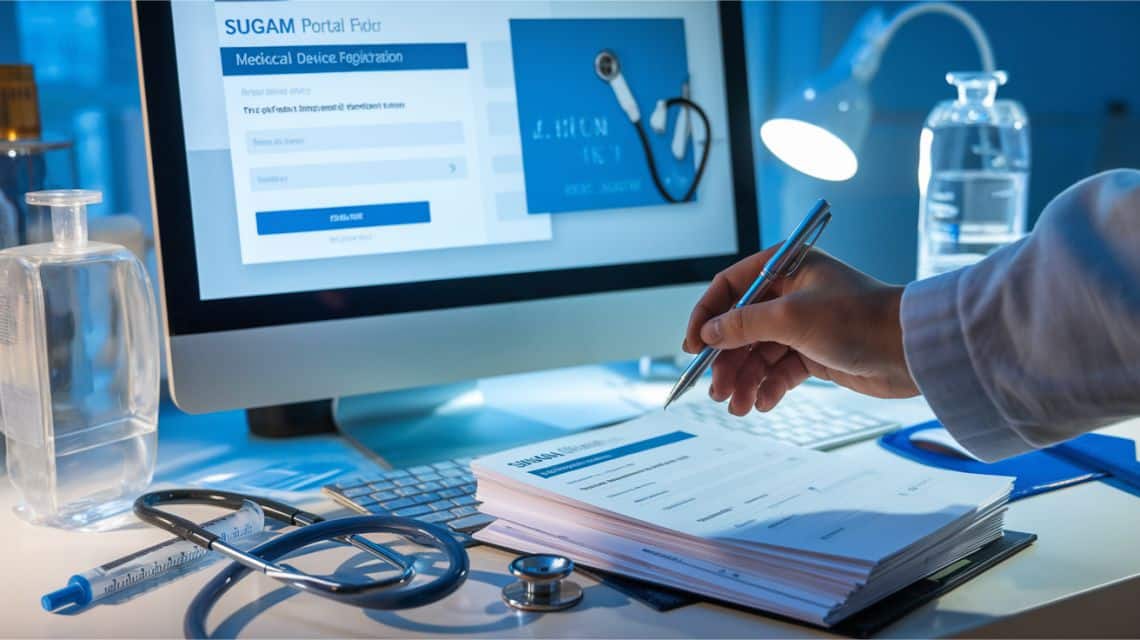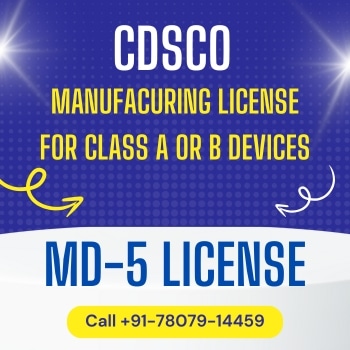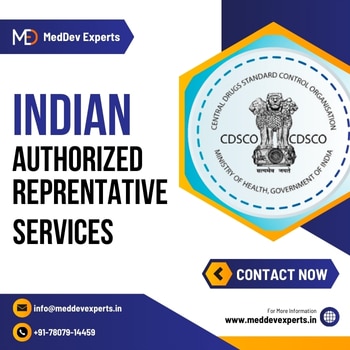CDSCO Registration for Medical Devices and IVD
Are you navigating the complex world of medical device and IVD regulations in India? The Central Drugs Standard Control Organisation (CDSCO) registration process can seem daunting, but it’s crucial for ensuring the safety and efficacy of healthcare products in the Indian market.
As India’s National Regulatory Authority, CDSCO plays a pivotal role in overseeing medical devices and In Vitro Diagnostics (IVDs). From low-risk Class A devices to high-risk Class D products, understanding the intricacies of CDSCO registration is essential for manufacturers, importers, and distributors alike. Whether you’re seeking import licenses, manufacturing approvals, or guidance on clinical investigations, this comprehensive guide will illuminate the path through India’s regulatory landscape.
In this post, we’ll unravel the complexities of CDSCO registration, exploring everything from the regulatory framework and classification systems to the step-by-step application process through the Sugam portal. We’ll also delve into critical aspects like post-market surveillance and quality management, ensuring you’re well-equipped to navigate this vital process. Let’s embark on this journey to demystify CDSCO registration and set your medical device or IVD on the path to success in the Indian market!
Overview of CDSCO and Its Role in Medical Device Regulation
About the Central Drugs Standard Control Organisation (CDSCO)
The Central Drugs Standard Control Organisation (CDSCO) is India’s national regulatory body for pharmaceuticals and medical devices, operating under the Ministry of Health and Family Welfare. Established to ensure the safety, quality, and efficacy of medical products, CDSCO plays a crucial role in overseeing the healthcare sector.
Role and Responsibilities in Regulating Medical Devices and IVDs
CDSCO’s responsibilities in regulating medical devices and In Vitro Diagnostics (IVDs) include:
Implementing the Medical Devices Rules of 2017
Overseeing the classification of medical devices into risk-based categories (A, B, C, and D)
Granting approvals for clinical trials, import licenses, and manufacturing
Coordinating with State Drugs Control offices for consistent regulation
Issuing Free Sale Certificates and Market Standing Certificates
Conducting post-market surveillance and quality control
Mission to Ensure Safety, Quality, and Efficacy
- Rigorous evaluation of clinical trial applications
- Enforcing compliance with the Drugs & Cosmetics Act of 1940 and Medical Devices Rules of 2017
- Establishing quality standards for medical devices
- Collaborating with various committees, including the Apex Committee and Technical Committee
CDSCO’s primary mission is to safeguard public health by ensuring that medical devices and IVDs meet stringent safety and quality standards. This is achieved through:
Online System for Application Management
To streamline the regulatory process, CDSCO has implemented an online portal called Sugam. This system facilitates:
Registration of medical devices
License applications for import and manufacture
Submission of clinical investigation and performance evaluation data
Processing of various certificates required for regulatory compliance
With this comprehensive overview of CDSCO and its critical role in medical device regulation, we can now explore why CDSCO registration is important for manufacturers, importers, and other stakeholders in the medical device industry.
Why CDSCO Registration is Important
Now that we have covered the overview of CDSCO and its role in medical device regulation, let’s delve into why CDSCO registration is crucial for manufacturers and importers in the medical device industry.
Benefits of CDSCO Registration
CDSCO registration offers several significant advantages for companies operating in the Indian medical device market:
Market Access: Obtaining CDSCO registration is essential for legally manufacturing, importing, or marketing medical devices in India. This opens up a vast market opportunity for businesses.
Regulatory Compliance: Registration ensures that your medical devices meet the stringent safety and quality standards set by Indian regulations, specifically the Drugs and Cosmetics Act.
Enhanced Credibility: A CDSCO certificate signifies that your products have undergone rigorous testing and comply with national standards, building trust among healthcare professionals and patients.
Quality Assurance: The registration process involves thorough quality checks, particularly for imported devices, ensuring that only safe and effective products reach the Indian market.
The Importance of CDSCO Certification
The CDSCO certificate serves as a testament to a product’s compliance with India’s regulatory framework. It is crucial because:
It demonstrates that the medical device or IVD has met all necessary safety and efficacy requirements.
It allows for legal distribution and sale of the product within India.
It provides assurance to end-users about the product’s quality and reliability.
Streamlined Regulatory Process
CDSCO registration streamlines the regulatory process for pharmaceutical and medical device companies by:
Providing an online registration system for efficient application submission.
Offering a structured approach to obtaining necessary permissions and licenses.
Facilitating coordination between central and state-level drug control organizations for effective regulation implementation.
With this understanding of the importance of CDSCO registration, we’ll next explore who needs to obtain this crucial certification in the section “Who Needs CDSCO Registration?”. This will help clarify which entities are required to comply with these regulations to operate in the Indian medical device market.
Who Needs CDSCO Registration?
Now that we have covered the importance of CDSCO registration, let’s explore who needs to obtain this crucial certification in India.
Who Can Apply for CDSCO Registration?
- Domestic manufacturers with registered offices in India
- Foreign manufacturers through their authorized representatives or subsidiaries
Indian agents representing foreign manufacturers
Importers of medical devices and pharmaceuticals
Parent companies of manufacturing units
Foreign companies with Indian subsidiaries
The Central Drugs Standard Control Organization (CDSCO) registration is essential for various entities involved in the medical device and pharmaceutical industry in India. The following parties are eligible to apply for CDSCO registration:
Registration Process for Different Entities
The registration process varies slightly depending on the type of applicant:
Manufacturers and Importers: These entities must complete the online registration form on the CDSCO website. They need to select the appropriate registration purpose, such as drug import, cosmetic registration, or medical device registration.
Corporates: Manufacturing units must register through their parent corporates, ensuring a streamlined process for multi-facility organizations.
Foreign Enterprises: Companies with Indian subsidiaries can apply for registration, facilitating their entry into the Indian market.
Key Requirements for CDSCO Registration
Regardless of the applicant type, there are common requirements for CDSCO registration:
- Unique corporate email as username
- Secure password meeting specified criteria
- Uploading essential documents in PDF format: ID proof, Power of Attorney, Address proof, Other documents specific to the registration type
- Option to receive SMS alerts during the registration process
- Activation of account through a confirmation link sent via email
- Regular monitoring of registered email and phone for communication regarding application status
With this understanding of who needs CDSCO registration and the basic requirements, we’ll next explore the classification of medical devices and IVDs under CDSCO, which is crucial for determining the specific regulatory pathway for each product.
Classification of Medical Devices and IVDs under CDSCO
Now that we have covered who needs CDSCO registration, let’s delve into the classification of medical devices and IVDs under CDSCO regulations.
Classification of Medical Devices as per Indian CDSCO Regulation
The Central Drugs Standard Control Organization (CDSCO) has established a comprehensive classification system for medical devices and In Vitro Diagnostic (IVD) devices based on their associated risks and intended use. This classification is crucial for determining the appropriate regulatory pathway for each device. The CDSCO categorizes medical devices and IVDs into four distinct classes:
Class A: Low risk
Class B: Low moderate risk
Class C: Moderate high risk
Class D: High risk
This risk-based classification system helps streamline the regulatory process and ensures that appropriate levels of scrutiny are applied to devices based on their potential impact on patient safety.
Class A Non-Measuring/Sterile Devices
Class A devices, which include non-measuring and sterile devices, represent the lowest risk category in the CDSCO classification system. These devices typically require a simpler regulatory pathway compared to higher-risk classes. Key points about Class A devices include:
Online Registration: Class A devices only require online registration through the SUGAM portal, which simplifies the process for manufacturers and importers.
It’s important to note that the CDSCO periodically updates its classification lists under the Medical Device Rules of 2017.
With this classification system in mind, next, we’ll explore the regulatory framework for medical devices in India, which builds upon these classifications to establish comprehensive guidelines for device manufacturers, importers, and distributors.
The CDSCO Medical Device and IVD Registration Process in India
Now that we have covered the regulatory framework for medical devices in India, let’s delve into the step-by-step process of CDSCO medical device and IVD registration in India.
Step 1: Classification of Medical Device/IVD as per CDSCO Regulatory Guidelines
The first crucial step in the registration process is to determine the classification of your medical device or IVD. CDSCO categorizes devices based on their risk level, ranging from low-risk items like cotton swabs to high-risk devices such as heart valves. This classification will guide the subsequent steps and requirements for registration.
Step 2: Preparing the Required Documentation
Once the classification is determined, gather all necessary documents, including:
- Free Sale Certificate
- CE Certificate
- Device Master File
- Certificate of Analysis of the finished product
- Performance evaluation report
- Stability Data
- Other supporting documents as per device classification
Step 3: Submitting the Application on the CDSCO Portal Online
The registration process is conducted entirely online through the CDSCO portal, known as cdscomdonline. Follow these steps:
Visit the official CDSCO website
Click on “Sign Up Here” to create a new user account
Select the appropriate user category (e.g., manufacturer, importer)
Fill in basic business details
Upload the required documents
Pay the fee
Submit the application
Step 4: CDSCO Review and Evaluation
- Regularly check your registered email and phone for communications
- Be prepared to provide additional information if requested
- The review process assesses compliance with the Indian Medical Device Rules, 2017
After submission, CDSCO officials will review your application. During this phase:
Step 5: Approval or Rejection
Upon completion of the review:
You will receive an email notification regarding the approval or rejection of your application
If approved, you will be granted the CDSCO registration certificate
If rejected, carefully review the reasons provided and consider reapplying with the necessary modifications
In the next section, we’ll explore the various licenses available for manufacturing and importing medical devices in India for your medical device or IVDs.
CDSCO Licenses for Manufacturing and Import
Now that we have covered the CDSCO Medical Device and IVD Registration Process in India, let’s delve into the various licenses available for manufacturing and importing medical devices in India.
CDSCO Manufacturing License Registration for Medical Devices
This license is essential for manufacturers producing low to moderate-risk devices. The application process involves completing Form MD-3 and adhering to specific regulations for production and distribution.
For higher-risk devices, manufacturers must obtain the MD-9 license. This requires submitting Form MD-7 and complying with more stringent regulatory standards.
This license is crucial for R&D purposes, permitting the manufacture of devices for testing and evaluation.
The MD-15 license facilitates the importation of medical devices into India. Applicants must submit Form MD-14 to obtain this license.
MD 17 Test license for imported products
This license is specifically for organizations importing devices for clinical trials in India.
While primarily for sellers, this license is relevant to importers as it allows them to distribute imported devices in the Indian market.
Key points to remember:
All manufacturers, importers, and distributors require appropriate CDSCO licenses.
Licenses vary based on device classification (Class A to D) and intended use (manufacturing, import, or testing).
The application process involves submitting specific forms and undergoing facility inspections.
Compliance with good manufacturing practices and quality control documentation is essential.
With this comprehensive understanding of CDSCO licenses for manufacturing and import, we’ll next explore the specific CDSCO forms required for registration, which are crucial for navigating the application process efficiently.
CDSCO Forms for Registration
When registering predicate medical devices or IVDs with CDSCO, manufacturers must familiarize themselves with specific forms tailored to different device classifications and purposes. These forms are essential for obtaining the necessary licenses and approvals.
Form MD 5 License
The MD 5 form is used to apply for a manufacturing license for Class A or B medical devices. This license is crucial for manufacturers producing lower-risk devices within India.
Form MD 6 Loan License
For companies looking to manufacture Class A or B devices at a third-party facility, the MD 6 form is required to obtain a loan license.
Form MD 9 License
Higher-risk devices falling under Class C or D categories require the MD 9 form for manufacturing license applications.
Form MD 10 Loan License
Similar to MD 6, the MD 10 form is used for loan license applications for Class C or D devices manufactured at third-party facilities.
Form MD 13 Test License
The MD 13 form is essential for obtaining a test license, allowing manufacturers to conduct necessary testing on their medical devices.
Form MD 15 Import License
The MD 15 form is essential for importing medical devices and IVDs into India.
Form MD 17 Test License
MD 17 is issued to import medical devices and IVDs to import medical devices and in-vitro diagnostic medical devices for the purposes of testing, evaluation and training purposes.
Now that we have covered the CDSCO Forms for Registration, let’s explore the application process through the Sugam Portal, which is crucial for medical device and IVD registration in India.
User registration requirements
- The authorized signatory or responsible person of the organization must complete the online registration form.
- Eligible applicants include Corporates, Indian Agents, Importers, and Foreign Enterprises with Indian Subsidiaries.
- Manufacturing units must register through their parent Corporates.
- A unique corporate email address is required as the username.
- Users must create a strong password meeting specified criteria.
- Essential documents to be uploaded in PDF format (not exceeding 10 MB) include: ID proof, Power of Attorney, Address proof and Other documents depending on registration type
To begin the application process, users must first register on the Sugam Portal. Here are the key requirements:
Document submission guidelines
All uploaded PDF documents should not exceed 10 MB in size.
Ensure all submitted documents are self-attested.
Include a manufacturing license issued by state authorities.
Upload corporate address proof and the manufacturing license as separate files.
Provide personal and organizational details, including the applicant’s name and contact information.
When submitting documents through the Sugam Portal, applicants should adhere to the following guidelines:
Application tracking and notifications
The Sugam Portal offers a user-friendly system for tracking applications and receiving notifications:
- After submission, a confirmation link is sent via email for account activation.
- Users must click this link to send their application for approval to CDSCO officials.
- Email notifications are sent regarding the approval or rejection of the application.
- Applicants can opt to receive SMS alerts during the registration process.
- The portal features a workflow-enabled system with timely alerts and notifications.
- Users should regularly check their registered email and phone number for updates on their registration status.
By following these steps and guidelines, applicants can efficiently navigate the CDSCO registration process through the Sugam Portal. With this in mind, next, we’ll explore the important aspects of Post-Market Surveillance and Quality Management, which are crucial for maintaining compliance after registration.
Post-Market Surveillance and Quality Management
Now that we have covered the application process through the Sugam Portal, let’s delve into the crucial aspects of post-market surveillance and quality management for medical devices and IVDs in India.
Importance of ongoing monitoring
Post-market surveillance (PMS) is a critical regulatory process that ensures the safety and effectiveness of medical devices after their release into the market. In India, this process is governed by the Medical Devices Rules 2017 and overseen by the Central Drugs Standard Control Organization (CDSCO). PMS involves:
Continuous collection and analysis of data from various sources
Identification of potential safety and efficacy issues
Assessment of devices in real-world clinical use
Compliance with quality management systems
To maintain high standards of safety and efficacy, manufacturers must adhere to stringent quality management systems. Key elements include:
- Implementing a robust complaint handling system
- Reporting adverse events and serious adverse events promptly
- Conducting Field Safety Corrective Actions (FSCA) when necessary
- Compiling comprehensive PMS reports as mandated by regulations
These practices not only ensure regulatory compliance but also contribute to continuous improvement of medical devices and IVDs.
Handling of medical device alerts
Effective handling of medical device alerts is crucial for patient safety. The process involves:
- Collaborative efforts among healthcare professionals, hospitals, clinical engineers, and manufacturers
- Prompt reporting of adverse events through established channels
- Investigation of incidents by qualified personnel
- Implementation of corrective measures to prevent recurrence
As we move forward, it’s important to consider other critical aspects of CDSCO registration. In the next section, we’ll explore additional important considerations that manufacturers and importers should keep in mind when navigating the regulatory landscape for medical devices and IVDs in India.
Other Important Considerations
Now that we’ve covered post-market surveillance and quality management, let’s explore some other important considerations for CDSCO registration of medical devices and IVDs.
Medical Device Market Access Requirements
When seeking CDSCO registration, it’s crucial to understand the broader market access requirements for medical devices in India. The CDSCO serves as the national regulatory authority, overseeing:
- Approval of new drugs
- Quality assessment of existing pharmaceuticals and medical devices
- Safety evaluation of cosmetics
Registration with CDSCO is essential for pharmaceutical and healthcare companies as it:
Ensures compliance with legal standards
Guarantees consumer safety
Enhances market trust
Aligns products with international norms
Streamlined CDSCO Medical Device Online Registration
The current CDSCO registration system offers several benefits, making the process more efficient:
Fully online process: The entire registration can be completed through the CDSCO portal
User-friendly interface: Applicants can easily create an account and fill out necessary forms
Email verification: Account activation is simple through email confirmation
Prompt notifications: Applicants receive email updates on approval or rejection status
CDSCO Certification as Part of the Registration Process
CDSCO certification is an integral part of the overall registration process. Key aspects include:
- Document submission: Applicants must provide comprehensive product information, including composition, indications, and clinical trial data
- Compliance requirements: Adherence to norms such as Good Manufacturing Practices (GMP) is essential
- Inspection readiness: Companies should be prepared for potential inspections
- Adverse reaction reporting: Mechanisms must be in place to report any adverse events
By understanding these important considerations, applicants can navigate the CDSCO registration process more effectively. Next, we’ll explore how MedDev Experts can provide valuable assistance in obtaining CDSCO registration for medical devices and IVDs.
How MedDev Experts Can Help with CDSCO Registration
Expertise in CDSCO Regulations
MedDev Experts possess in-depth knowledge of CDSCO regulations, ensuring your medical device or IVD complies with all necessary requirements. Our team stays up-to-date with the latest regulatory changes, providing you with accurate and timely guidance throughout the registration process.
Comprehensive Documentation Support
We assist in preparing and reviewing all required documentation for CDSCO registration, including:
Technical dossiers
Clinical evaluation reports
Quality management system documentation
Risk management files
Product labeling and packaging materials
Our attention to detail ensures your submission is complete and error-free, reducing the likelihood of delays or rejections.
Streamlined Application Process
MedDev Experts simplify the CDSCO registration process by:
- Conducting a thorough assessment of your product
- Determining the appropriate device classification
- Identifying all necessary tests and clinical data requirements
- Managing communication with CDSCO officials
- Guiding you through the Sugam portal application
Our streamlined approach saves you time and resources while maximizing the chances of successful registration.
Post-Registration Support
Our services extend beyond initial registration. We provide ongoing support for:
Post-market surveillance
Handling regulatory inspections
Managing product changes and renewals
Addressing any compliance issues that may arise
With MedDev Experts as your partner, you can confidently navigate the complex landscape of CDSCO registration and maintain compliance throughout your product’s lifecycle.
Benefits of working with MedDev Experts as your consulting partner for CDSCO Registration
Now that we have explored how MedDev Experts can assist with CDSCO Registration, let’s delve into the specific benefits of partnering with them for this crucial process.
Expertise in Navigating Complex Regulations
MedDev Experts bring invaluable knowledge of CDSCO regulations, ensuring that your medical device or IVD registration process aligns with the latest requirements. Our expertise helps in:
- Accurately classifying your device into the appropriate risk category (Class A, B, C, or D)
- Preparing comprehensive documentation that meets CDSCO standards
- Addressing potential regulatory challenges proactively
Streamlined Application Process
Working with MedDev Experts can significantly expedite your CDSCO registration:
- We guide you through the online SUGAM portal application
- Assist in filling out necessary forms (MD-3, MD-4, MD-7, MD-8, MD-14 etc.) correctly
- Ensure all required documents are properly compiled and submitted
Enhanced Quality and Safety Assurance
- We help ensure compliance with Good Manufacturing Practices (GMP)
- Assist in preparing for stringent CDSCO inspections
- Provide guidance on maintaining high-quality standards throughout the registration process
MedDev Experts’ involvement contributes to improved product safety and quality:
Market Access and Credibility
Our expertise facilitates faster market entry for your medical devices or IVDs
CDSCO registration obtained through our guidance enhances your product’s credibility
They can provide insights on leveraging your registration for potential export opportunities
Partnering with MedDev Experts can boost your market position:
Post-Registration Support
MedDev Experts offer continued assistance beyond the initial registration:
- Guidance on post-market surveillance requirements
- Support for license renewals and updates
- Assistance with any regulatory changes or compliance issues
By leveraging the expertise of MedDev Experts, you can navigate the complex CDSCO registration process more efficiently, ensuring compliance while maximizing your product’s potential in the Indian market. With this solid foundation in place, let’s move on to our conclusion, where we’ll summarize the key points of CDSCO registration for medical devices and IVDs.
The CDSCO registration process for medical devices and IVDs in India is a complex but crucial step for manufacturers and importers looking to enter the Indian market. By understanding the regulatory framework, classification system, and application procedures, companies can navigate the process more effectively. The online Sugam portal has streamlined many aspects of registration, making it easier for stakeholders to submit applications and track their progress.
Compliance with CDSCO regulations not only ensures legal operation in India but also promotes patient safety and product quality. As the regulatory landscape continues to evolve, staying informed about updates and guidelines is essential. For those seeking assistance with CDSCO registration, partnering with experienced consultants like MedDev Experts can provide valuable support throughout the process, from initial application to post-market surveillance.


